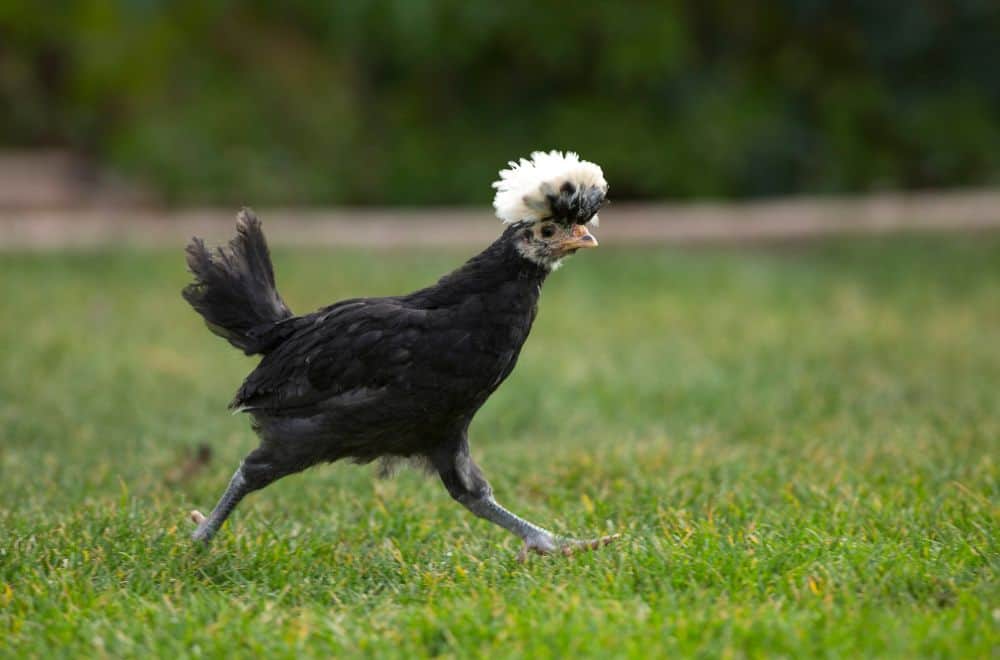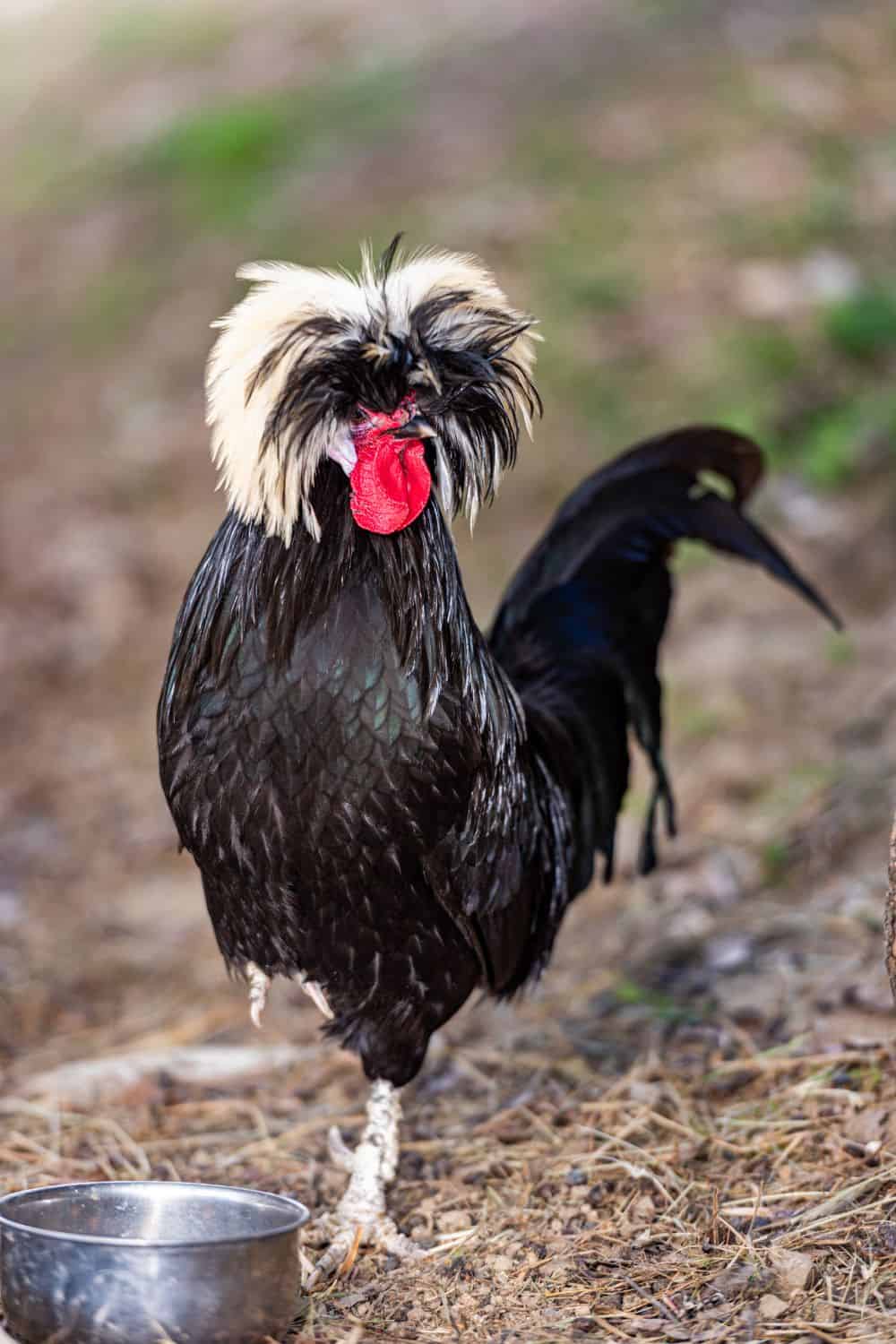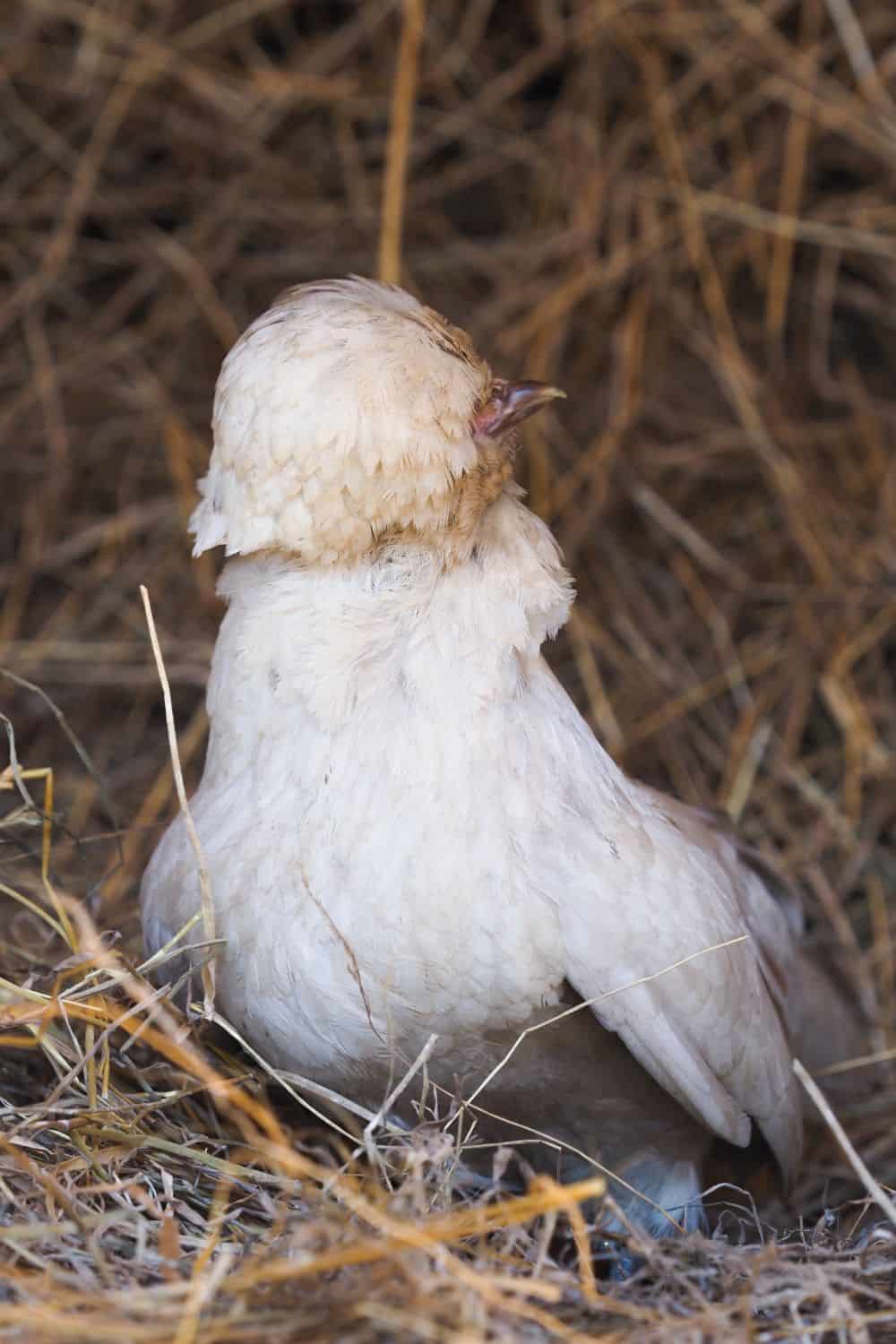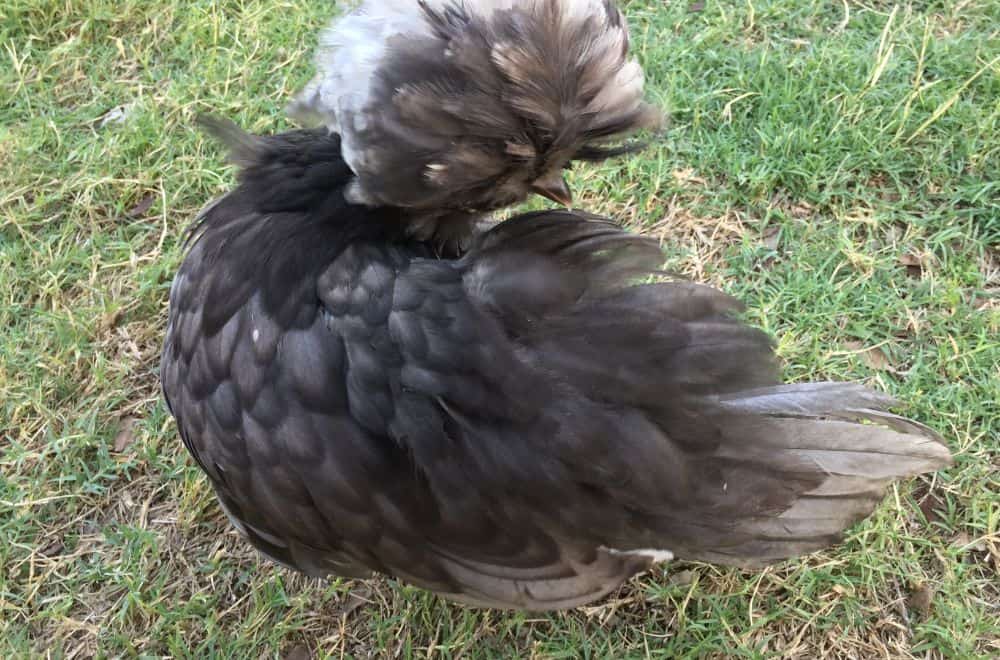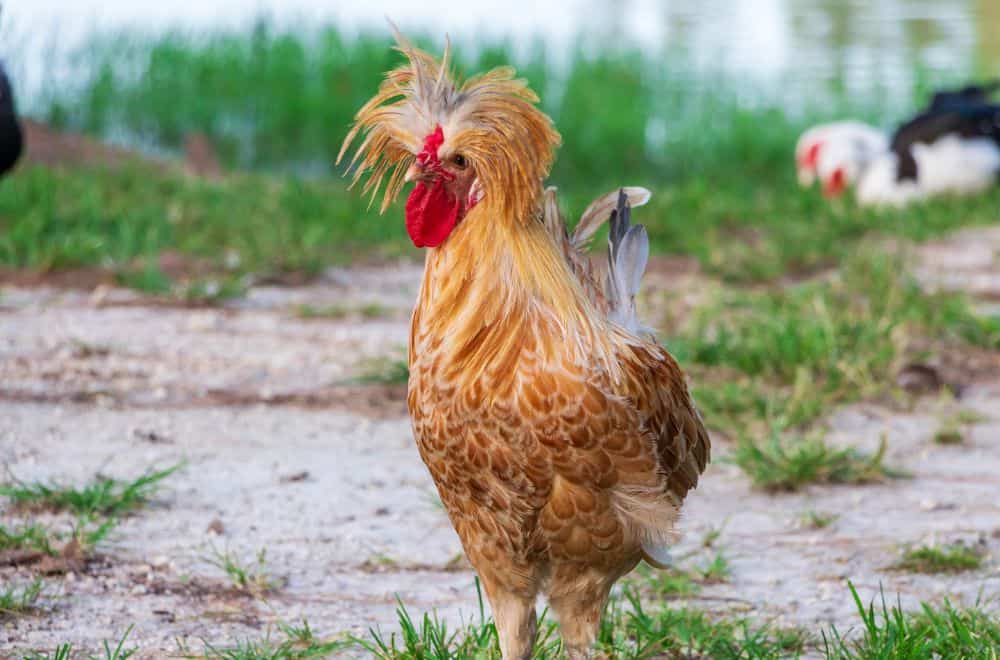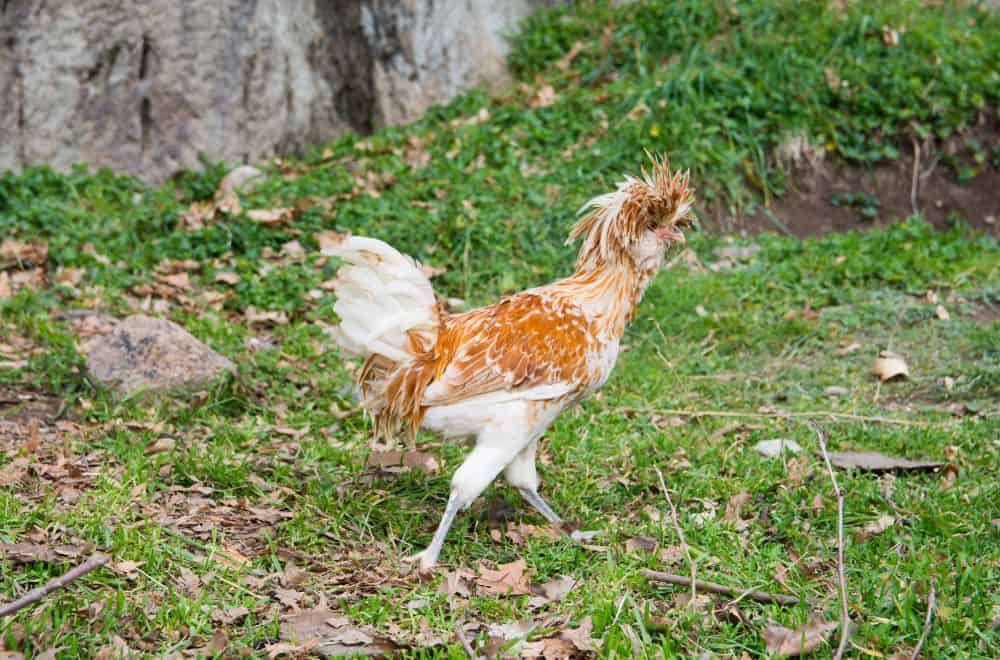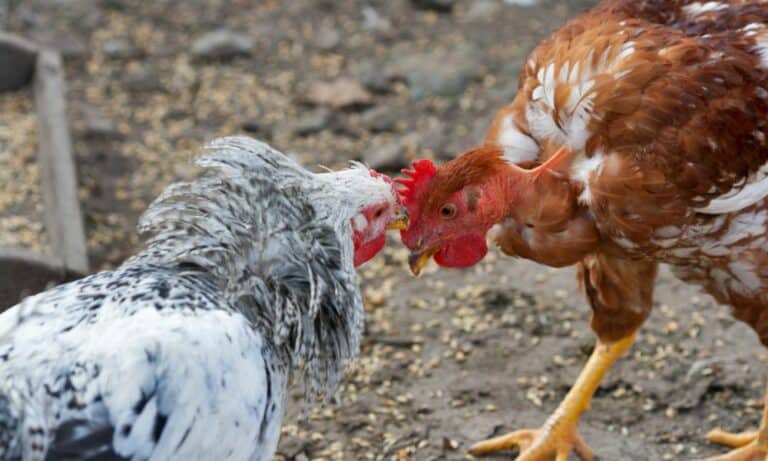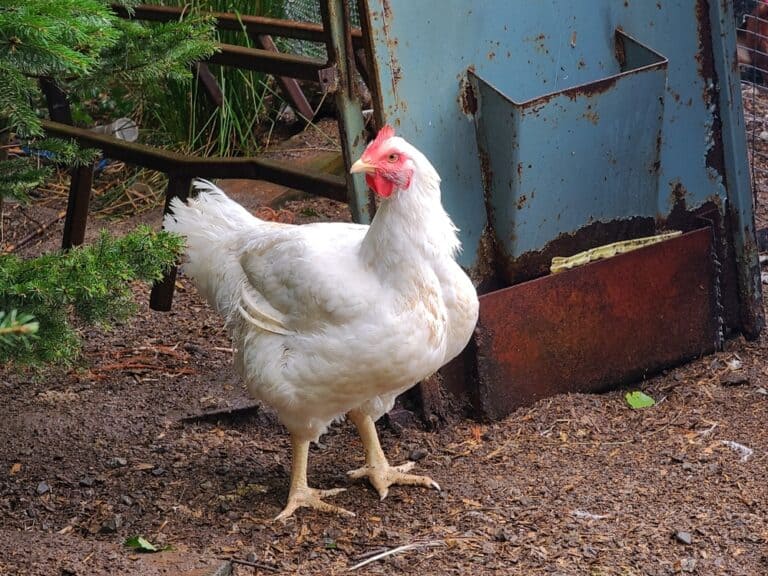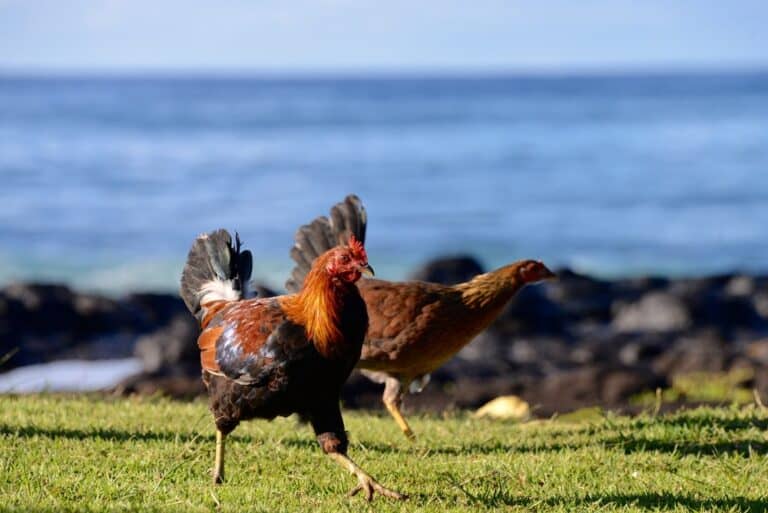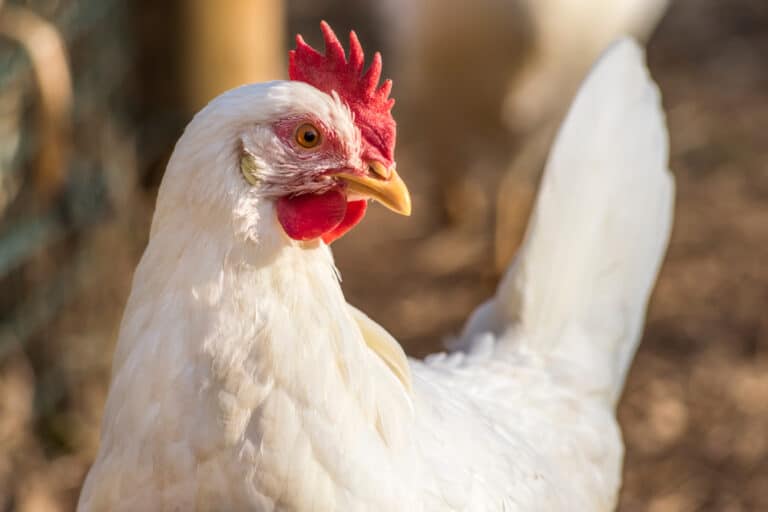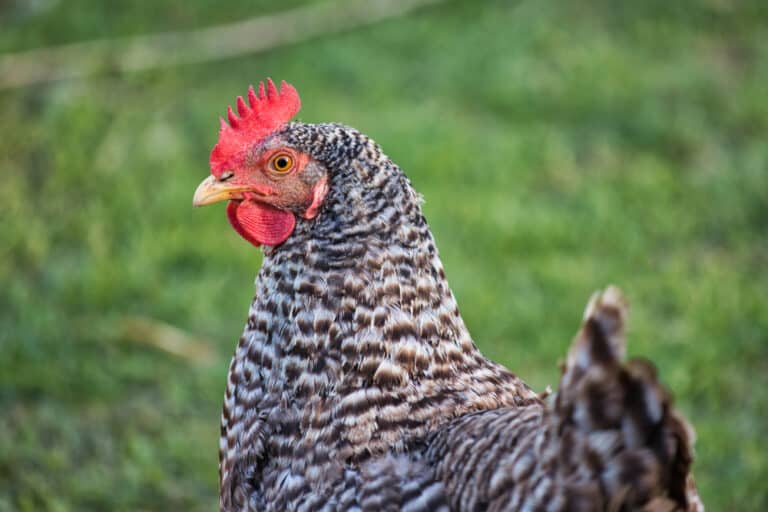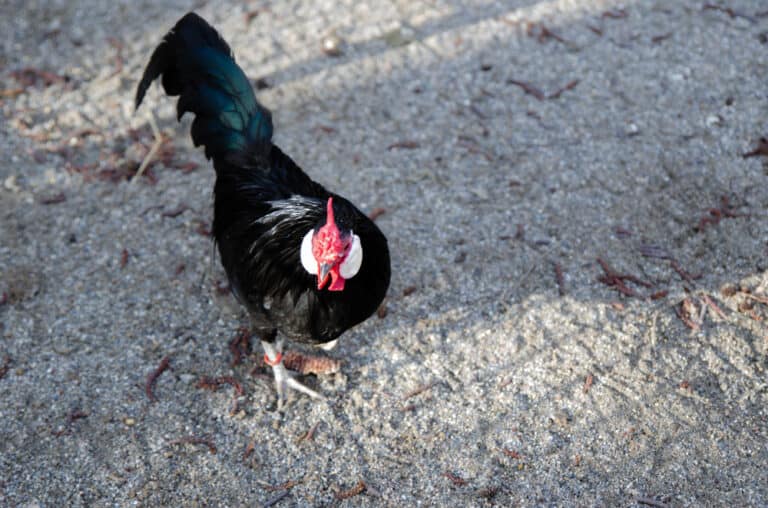If you’re interested in chicken breeds, one breed you need to know about is the Polish chicken. You may also hear it referred to as the Poland, Paduan or Top Hat chicken. This amazing bird has a large crest that means it really stands out from the crowd.
But there’s lots more that’s interesting about it too! Here, we’re going to look at the history, characteristics, temperament, and egg-laying capabilities of this fascinating breed.
Ready to learn more? Let’s get started!
Where did the Polish chicken come from?
You’re probably shouting “Poland!” right about now. But despite the name, the origins of the Polish chicken aren’t quite so clear cut.
In fact, the earliest paintings of the breed come from the Netherlands in the sixteenth century. And it might be that the name actually comes from the word pol, which is Dutch for “head”.
Why call a chicken “head”? Well, the dome-shaped head of the Polish chicken is one of its most distinctive features. So it is possible that the breed originated in Holland, rather than Poland.
Whether the truth of the matter, the Polish chicken most likely had Asian ancestors. Some believe that it was the invading Mongols who brought their forebears to central and eastern Asia in medieval times.
That theory would make it more likely that the breed first became established in Poland. And it might then have spread to the Netherlands and been standardized there.
It was certainly the Dutch who established it as a thoroughbred in the sixteenth century. And bantam Polish chickens – smaller than the standard kind – were first bred late in the eighteenth century.
It was several decades later that the Polish chicken set foot on American shores. According to the American Poultry Association, it was introduced to the USA between 1830 and 1840.
The first three varieties of Polish chicken were added to the American Standard of Perfection – the official breed standards for poultry – in 1874.
What are the characteristics of a Polish chicken?
So what does a Polish chicken look like?
We’ve already referred to its distinctive head and crest, and it’s these that make this bird so easy to spot.
Its crest – the tuft of feathers on the chicken’s head that points upwards – is particularly dramatic. it covers the whole head, and it’s so big that it partly obscures the bird’s vision.
That, as you might imagine, has some practical implications for the chicken! It often finds other animals or objects unexpectedly close to it, giving it a bit of a surprise. So while Polish chickens are usually tame birds, they can be quite timid and easily spooked.
When fully grown, male birds weigh around 6 pounds, while adult females are about 4.5 pounds. There’s also a bantam Polish chicken, which is smaller. Bantam males typically weigh a little under 2 pounds, while females are about 1.6 pounds.
Their combs – the red, fleshy bit on the top of their heads – are shaped liked a “V”. Combs play an important part in helping chickens regulate their body temperature. They act like air conditioning units, keeping the birds cool when the mercury rises.
Some, but not all, varieties of Polish chickens also have what’s known as “beards”. These are ruffles of feathers beneath their beaks.
And some are “frizzled”, while others are straight-feathered. Frizzled varieties have feathers that curl outwards from the body, giving them a sweet, fluffy appearance.
In all varieties, the wattles – the fleshy areas just behind the chickens’ beaks – are small. And they’re often completely hidden by either the crest, a beard, or both. The same goes for their earlobes, the fleshy areas on the sides of their heads.
In Polish chickens, the combs and wattles are both bright red, while the earlobes are white. They have four toes on each foot, and they don’t have any feathers on their slate-colored legs. (Poultry experts refer to unfeathered legs as being “clean”.)
Their skins are white. And their bodies are long and neat, with tails that are carried lower to the ground than in some other breeds.
Color varieties of Polish chickens
Polish chickens come in a variety of different colors, but they’re not all recognized by the American Poultry Association. If you want to show your chook at exhibitions, you’ll want a recognized variety.
For bearded Polish chickens, the APA recognizes golden, silver, white and buff laced colors. For non-bearded chickens, all the same colors are recognized, plus white crested black and white crested blue.
Another very attractive variety is known as the “Tolbunt”. These birds have a combination of black, brown and white feathers. For now at least, however, they’re not recognized by the APA.
Do Polish chickens lay good eggs?
Modern Polish chickens aren’t known for their egg-laying abilities – but that wasn’t always the case. In France, they were once considered an excellent breed for regular laying.
Over the years, however, breeders have focused more on enhancing their striking appearance, particularly their large crests. Today’s hens will lay around 150 white, medium to large eggs in a year. And they’ll start to lay any time after about 20 weeks of age.
One thing to be aware of if you’re looking to breed Polish chickens, is that they’re not great sitters. In other words, hens don’t incubate their eggs well. In fact, they have a penchant for pecking at them – so they’re best removed as soon as possible after laying!
With some of the strains bred as exhibition birds, hatching is often unsuccessful. That’s even the case if they’re incubated by a surrogate chicken mom of another breed.
The problems arise because the egg membrane is quite thick. Add to that the large domed head of the chick, and it’s not hard to see why hatching doesn’t always go smoothly.
Experts recommend keeping the eggs in specially designed incubation cabinets for the best results. That way, you can keep an eye on the eggs and give the chicks a helping hand if necessary once hatching starts.
Are Polish chickens good pets?
Yes! They’re inquisitive and friendly birds, and they’ll run to the person they’re used to feeding them. They’re happy with gentle cuddles too.
They can, though, be easily taken by surprise by people or animals, since their crests limit their field of vision. When that happens, they may take flight – and that large crest also leaves them vulnerable to hitting their heads on overhead obstacles.
Birds given the freedom to roam may benefit from having their crests cropped or taped up to avoid these problems. Note that their small size means they’re good flyers, though! So they may roost in trees if not confined.
Take care in your choice of feeders and drinkers as well. The design needs to avoid the chickens soiling their crests when they use them.
Nipple type waterers are better than bowl designs, because they won’t wet the feathers. That’s particularly important in cold weather, when a wet crest can quickly lead to chills or even pneumonia.
Polish chickens have relatively thin skulls, which make them especially susceptible to those problems. And for the same reason, they need appropriate shelter from rain and cold temperatures.
Roosters will be happier in a more confined space. Their crests are even more abundant than those of the hens, with long feathers down their backs and around their necks.
One other characteristic of the Polish chicken to be aware of is that they’re talkative birds!
For some, this makes them charming pets. We’ve heard of some birds who’ll cluck cheerfully in response to their name. But if you have near neighbors who are sensitive to noise, another breed might be better at preserving good relations.
As for their own neighbors, Polish chickens aren’t aggressive to chicks or other birds. But their unusual appearance means they can fall victim to bullying from other breeds. And their restricted vision can make it harder for them to escape conflict situations.
So don’t keep them in a mixed flock, except with other docile breeds. They’ll happily co-exist with Silkies, Houdans, Cochins, Sultans or Orpingtons.
How healthy are Polish chickens?
Polish chickens are relatively hardy birds, but they do need a warm, dry coop, and a dry, covered run. They’ll tolerate warmer weather, as long as they have access to shade and plenty of cool water.
When first hatched, the chicks’ skulls are not fully knitted together – much like human babies. But that does mean they can be killed by an adult pecking them in the wrong place. Keeping moms and their young away from other chickens for the first few weeks of the chicks’ life will minimize the risk.
The skulls remain a weak point into adulthood. As we’ve already seen, their thinness means that Polish chickens are vulnerable to chills and pneumonia.
The birds’ large crests can cause problems too. Dirty or wet crests can promote eye infections. And they’re susceptible to pests like lice.
They’re also more likely than many breeds to have a condition called “cross beak”. That happens when the bird’s skull is slightly compressed, leading to their top and bottom beaks not lining up.
It’s not just a cosmetic issue. Depending on the severity of the case, birds with cross beak may not be able to feed properly. That means they’ll need extra help from you to ensure they get enough sustenance.
But with proper care, Polish chickens will live just as long as other breeds. The average lifespan is between five and eight years, in line with the average for all chickens. And some individual birds can live for far longer.
Caring for the crest of the Polish chicken
If you’re keeping Polish chickens, knowing how to manage their large crests is an important part of keeping them happy and healthy.
As we’ve seen, cropping or taping the crests can improve your chickens’ vision. That’s particularly important if they’re roaming free, as they need to be able to spot predators. Another benefit is that it reduces the risk of soiled feathers, and with them, lice and eye infections.
Cropping can be effective, but it does need to be done very carefully. And some people advise against it, arguing that the hollow feathers make the chickens more vulnerable to infection.
If you do want to take this approach, this YouTube video from the Meyer Hatchery shows how to crop crests. (It’s also got some very chatty Polish chickens making their views known in the background!)
Some people tie up their chickens’ crests instead, but that can cause problems if the ties come loose. Some chickens will pull them out themselves, and if they eat them, that can lead to serious issues.
A better option is to tape them up. Make sure they’re not taped too tightly, and most chooks will tolerate this. Check out this YouTube video from Sarah Cromwell to see how to do it.
The problems associated with the Polish chicken’s large crest mean that some breeders are now seeking to reduce its size. No matter how striking a large crest looks, this is surely good news for the health and wellbeing of these lovely birds.
Other tips for happy Polish chickens
Their restricted vision means Polish chickens can be vulnerable to predators. So they’re more likely to stay safe if confined to some degree.
But they’re also inquisitive little birds, who get easily bored. That means they need enough space to roam happily. Plenty of perches and dust baths will give you contented chickens.
And now and again, birds may want some time out from the rest of the flock. (We know how they feel!) So creating a quieter spot will be much appreciated by your feathered friends.
The Polish chicken: quickfire summary
The Polish chicken is a beautiful bird that also makes a friendly and entertaining pet. And it produces a reasonable quantity of eggs too.
It does need care and attention, though. That large crest needs to be managed for the bird’s health and wellbeing, as well as its show potential. And it needs warmth, shelter and a dry run – plus the ability to satisfy its inquisitive nature!

